
Europe
North & South America
Oceania

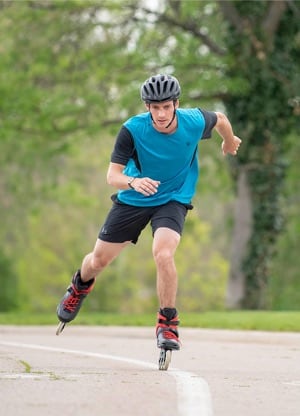
Being confident and in control on your skates is essential to getting the most out of the Skate to Ski Training System. Find a loop or out-and-back route that takes you about 30-45 minutes to complete. While skating, try varying your cadence to find your most efficient stride. Experiment with turn shape to control your speed on slight to moderate declines. Challenge yourself to maintain your pace on inclines. Mostly though, have fun carving up the pavement!
Core strength is essential to both skating and skiing. There are many great core workouts available for free on YouTube. Just make sure to pick one that hits more than just your abdominals. A good core workout should also focus on your lower back and hips. There are a ton of free Core workout videos on YouTube.
Click here for some suggested videos
This workout uses six exercises from Phases 2 & 3. You’ll need to find a smooth paved area that is free from traffic that is roughly 100-200 feet long. It should have a slight slope and be wide enough to set up cones for some of these exercises. You can go through these exercises in any order you’d like, spending 5-10 minutes on each skill. We’ve suggested 30-45 minutes, but feel free to spend as long as you’d like on this. Just like in skiing, know your limits. If you’re feeling exhausted and wobbly, it’s probably time for a break.
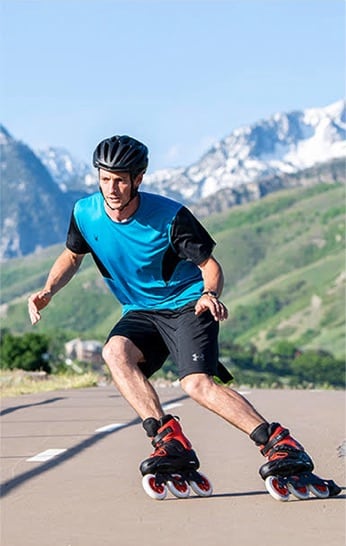

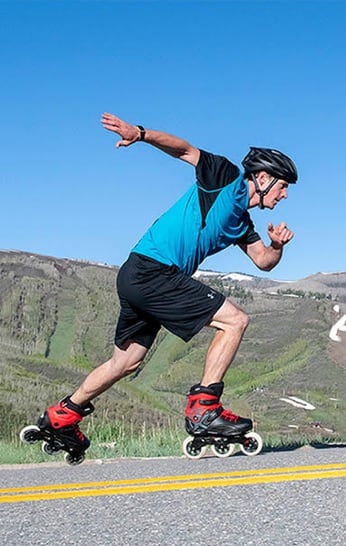



If you haven’t tried yoga yet to help your skiing, you’re missing out. The flexibility and isometric strength that comes from yoga is a critical piece of many professional skiers’ training. If yoga just isn’t your thing, then at least you should do a light warm-up followed by stretching. There are a ton of free Yoga videos on YouTube.
Click here for some suggested videos
If you’re into skiing and inline skating, chances are you’re into something else that can give you a good cardiovascular workout. We recommend doing a Long Slow Distance (LSD) day with one of your other activities such as running, cycling, or swimming. By mixing It up, you can prevent overuse of the same muscles and keep connected with your other activities.
Your body needs a chance to recover in order to operate at a peak level. Having a down day to rest and recharge is essential to this program.
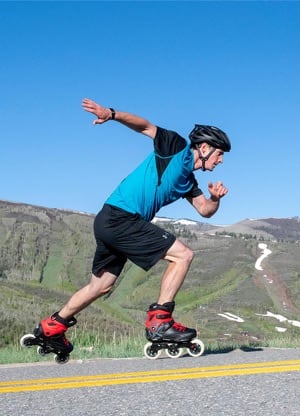
Similar to Training Plan 1, you will mix it up with one of your other activities such as running, cycling, or swimming. But now 45 minutes is the minimum.
Start with a 15-minute Free Skate to get fully warmed up. Then choose 6-8 of the exercises below to work on for 45+ minutes. Spend 5-10 minutes on each skill. Try mixing up which exercises you perform throughout the two-week cycle.

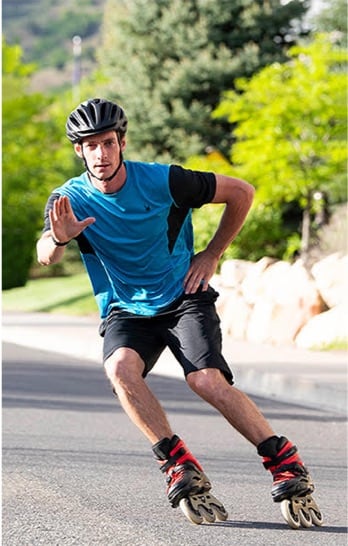

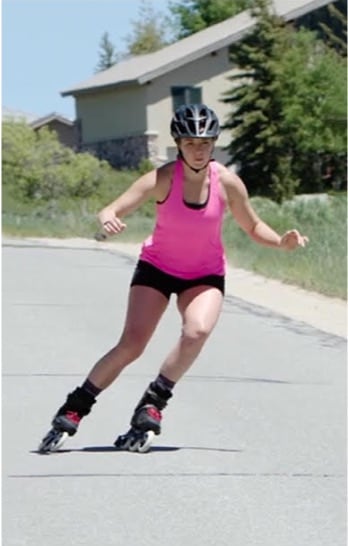






You can either do your normal Yoga (or Stretching) routine followed by a Core workout, or do a Yoga workout that focuses heavily on the Core.
Click here for some suggested videos
Perform your regular Core workout followed by a leg-blasting Plyometric workout. Plyometrics, also known as jump training or plyos, are exercises in which muscles exert maximum force in short intervals of time, with the goal of increasing power (speed-strength). Box Jumps are a great example of this exercise along with bounding, hop jumps and standing long jump. Plyometrics are high-impact so make sure your knees and joints can handle it.
Click here for some suggested videos
This is a long-distance skate done at a moderate pace. As always, if you’re trying out a new route, make sure you’ve scoped it out in advance for hazards such as bad pavement, road debris, steep hills, high traffic, etc. This day should be about skating at a steady pace for a long distance. Try to increase the distance over time.
This can be done on skates or you can do this with another sport such as running, cycling, or swimming. The concept is that you go at a moderate pace for 2 minutes followed by an all-out sprint for 30 seconds and repeat. With skates, you should start out with a route that is relatively flat. Over time you’re free to add moderate hills into this to really build explosive strength and stamina.
Your rest day really should include some moderate stretching and foam rolling. The intensity of Training Plan 2 will cause you to build up lactic acid that can make you stiff. In fact, foam rolling at any point when you’re feeling tight is highly recommended.
Here is a selection of videos from YouTube that you may find helpful. Again, please check with your doctor if you have any potential health concerns before trying these. Core workouts, Yoga, and especially high-impact Plyometrics carry a risk of injury. Please know your limits before trying any of these.
A wide variety of Yoga videos - Yoga with Adriene
www.youtube.com/user/yogawithadriene/videos
If you’re feeling wiped and need recovery - Five Parks Yoga Apres Ski
https://www.youtube.com/watch?v=ILiLO0Q6qFo
If you’re looking for a more intense athletic Yoga - Yoga For The Warrior
www.youtube.com/watch?v=LRRbfcN29mM
Core workout with optionals weights - 30 Minute Intense Core Workout
www.youtube.com/watch?v=N5ViYeGJOCA
Combo Core with Plyo - 45 Min HIIT Cardio and Abs Workout
www.youtube.com/watch?v=eHUX2Gz_dhg
An intense Plyometric workout - STRONGER Month 1 Plyometric Workout
www.youtube.com/watch?v=Yf4Y9XG8ZmY
How to Use a Foam Roller for Recovery https://www.youtube.com/watch?v=t4A523-O5uk